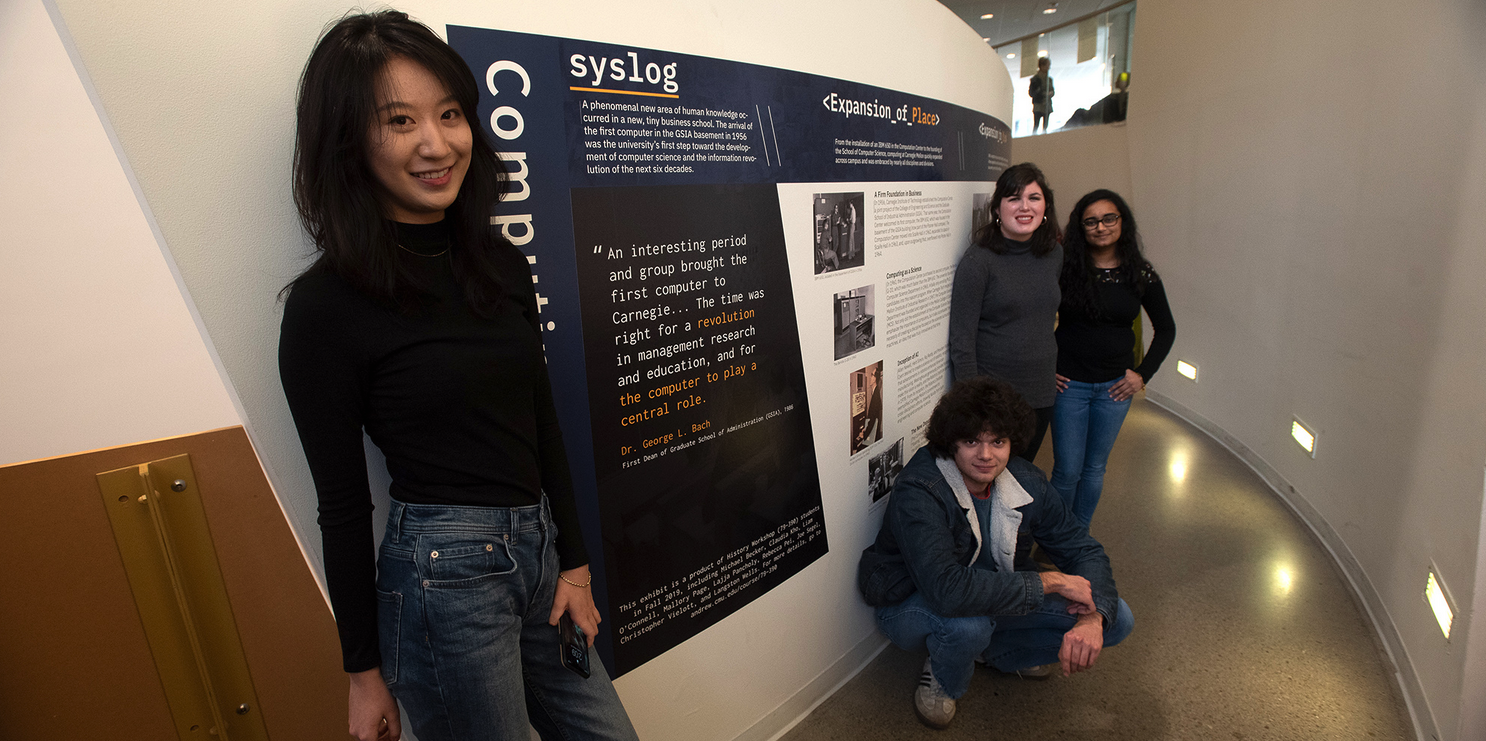
Carnegie Mellon University is well-known for its work in computing technology, but how did that legacy begin? In fall 2019, an interdisciplinary class of CMU students traced the history of computing at the university, which culminated in an exhibit in the Gates and Hillman centers.
'One of the themes that emerged as students did the research and as we spoke with them is just how much of a bet Carnegie Mellon, and Carnegie Tech before that, took on computing,' said Christopher J. Phillips, an associate professor in CMU's Department of History and one of the course instructors.
'If you look around the United States in the 1950s, it isn't obvious that computers are going to have the central role in every element of life that they did,' Phillips said. 'Part of what was really interesting about the experience at Carnegie Tech and then Carnegie Mellon, at least for the students to discover, is how much it was a chance, it was just kind of a guess that this would be an area of development in the 20th century.'
Led by CMU's Andrew Meade McGee, a visiting assistant professor of history and a Council on Library and Information Resources (CLIR) postdoctoral fellow based in the University Libraries, and Phillips, 'Computing_CMU.LOG' is a collaborative project among members of Dietrich College of Humanities and Social Sciences, Carnegie Mellon University Libraries and the School of Computer Science.
'Some students came from information systems and computer science, but others came from history or the School of Design,' Phillips said. 'Having that back and forth between students who are learning about computing and computing history for the first time, but know a lot about history, and students who know a lot about history, but might not know about the mid-century American context was a very fruitful collaboration.'
Read the rest of this story on the Dietrich College News site.
